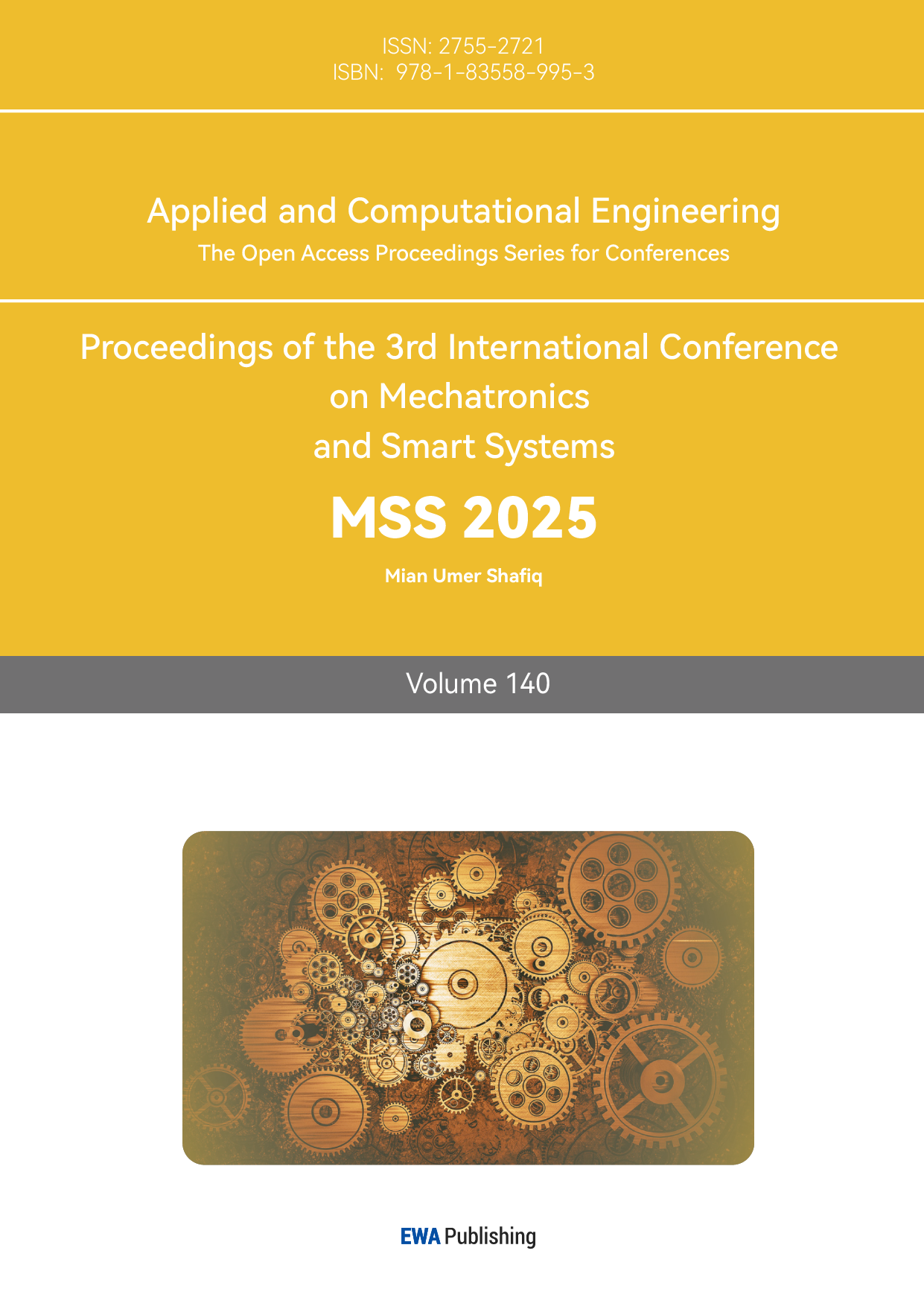1. Introduction
MXene is a new class of two-dimensional transition metal carbides or nitrides [1], characterized by excellent hydrophilicity and conductivity. Its interlayer spacing, chemical composition, and surface functional groups are all tunable, and it can be easily assembled into self-supporting films for use as electrode materials. This makes MXene, upon its initial discovery, exhibit significant development potential in the energy storage field, especially in supercapacitor applications. MXene is obtained through a chemical exfoliation process from the ternary layered compound MAX phase, where M represents a transition metal element, A refers to elements from groups IIIA and IVA, and X is either carbon or nitrogen, with the general chemical formula being Mn+1AXn. In the MAX phase structure, X atoms are located within the densely packed M layers, and the A layers alternate with M layers. After the A layers are removed by hydrofluoric acid (HF) etching, what remains is a few layers of Mn+1Xn atoms [2], forming a structure similar to graphene, which results in MXene, as shown in Figure 1.
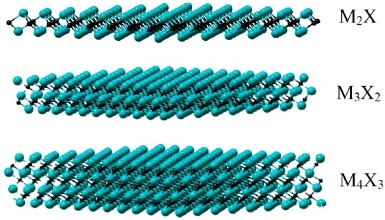
Figure 1: Schematic Diagram of MXene Structure.
Both MXene and its parent MAX phase have a dense hexagonal structure, and their atomic arrangement is orderly within the plane. Although the number of M atoms varies, their arrangement also differs. For example, in M2X, the M atoms adopt an ABABAB packing arrangement, while in M3C2 and M4C3, the M atoms are arranged in an ABCABC face-centered cubic manner [3].
MXene materials possess many excellent properties, such as high electrical conductivity, large specific surface area, outstanding stability, and good thermal conductivity, conductivity, and hydrophilicity. These properties make MXene an ideal choice for grafting surfactant functional groups and tunable structures, showcasing a range of unique physicochemical properties, particularly in the field of super energy storage. The specific reasons include:
The free electrons on the transition metal carbide or nitride backbone in MXene can quickly supply electrons to electrochemical active sites; The transition metal oxide-like surfaces formed during synthesis exhibit significant redox activity [4][5]; The two-dimensional layered structure and interlayer water molecules facilitate rapid ion conduction [4]. To obtain high conductivity and high-strength films, one of the key challenges is finding nanofillers that inherently possess excellent conductivity and strength. The unique crystal structure and elemental composition of MXene endow it with high electrical conductivity (104 S·cm-1) and high capacitance (1500 F·cm-3), while also exhibiting excellent solution dispersion properties that allow it to remain stable in a variety of polar solvents. Its good processability enables MXene to be constructed into various macroscopic structures, such as fibers, films, and three-dimensional aerogel/hydrogel structures, to meet different application needs.
MXene is a type of two-dimensional material with high conductivity and good chemical stability. This paper introduces the molecular structure, synthesis methods, and unique properties of MXene. It demonstrates the advantages of MXene in the field of power electronics, where power electronic devices require high energy density, long service life [6], among other properties. This paper will discuss how MXene enhances the performance of power electronic devices, such as in capacitors, batteries, and other applications [7][8]. It will also analyze the future research directions of MXene [9], explore its development potential in the field of power electronics, and address the challenges it faces to promote further practical application of this material.
2. Working Principle and Performance of MXene Supercapacitors
2.1. Electric Double Layer Mechanism
Electric double layer capacitors store energy by charge separation at the electrode-electrolyte interface, a purely physical phenomenon that offers high power density and allows rapid charging and discharging. For electrodes with the same surface area, electrochemical capacitors can store 10 to 100 times more charge than electric double layer capacitors. The key difference between the two lies in whether or not induced current is generated. The energy storage in electric double layer capacitors primarily depends on the formation of a charge double layer structure between the electrode and electrolyte. This interface double layer forms due to Coulomb forces and interactions between molecules and atoms, creating a stable, oppositely charged double layer at the solid-liquid interface when the electrode contacts the electrolyte, as shown in Figure 2(a).
(1) Charging Process: When an electric field is applied to the two electrodes, positive and negative ions in the electrolyte migrate towards their corresponding electrodes, forming the double layer at the electrode-electrolyte interface. After the electric field is removed, the double layer stabilizes due to repulsion between like charges and attraction between opposite charges, generating a stable potential difference.
(2) Discharging Process: After the electrode is connected to an external circuit, electrons begin to move directionally under the drive of the potential difference, forming an external current. At the same time, the ions originally adsorbed on the electrode surface will re-enter the electrolyte, causing the disintegration of the double layer structure.
2.2. Pseudocapacitor Mechanism
Electrochemical capacitors, also known as pseudocapacitors, operate based on redox reactions, where charge transfer facilitates the exchange of electrons for energy storage. Pseudocapacitors offer higher power density than batteries and have energy densities that exceed traditional electrostatic capacitors, with capacitance reaching several hundred farads or even thousands of farads. The characteristic feature of pseudocapacitors is that electroactive materials on the surface or in the bulk phase of the electrode material can undergo underpotential deposition and reversible chemical adsorption/desorption or oxidation/reduction reactions. These reactions are closely related to the electrode charging potential, thereby generating a corresponding capacitive effect [5]. Since the reaction involves the bulk phase of the entire electrode, pseudocapacitors provide larger capacitance values, as shown in Figure 2(b).
(1) Charging Process: When the electrode is connected to the external circuit, under the influence of the applied electric field, both cations and anions gather significantly on the surface of the electrode or solution. Through redox reactions, these ions enter the bulk phase of the electrode’s active oxide surface, storing charge.
(2) Discharging Process: During discharge, ions that entered the oxide structure return to the electrolyte through the reverse redox reaction while releasing the stored charge, which flows out through the external circuit.
2.3. Hybrid Mechanism
Hybrid mechanism capacitors are supercapacitors that combine the technological features of electrostatic double layer capacitors (EDLCs) and pseudocapacitors to achieve superior performance. In such capacitors, one end utilizes the energy storage mechanism of electrostatic double layer capacitors, while the other end adopts the energy storage mechanism of pseudocapacitors, as shown in Figure 2(c). This combination allows the capacitor to achieve a better balance between energy density and power density, offering higher energy output and longer cycle life.
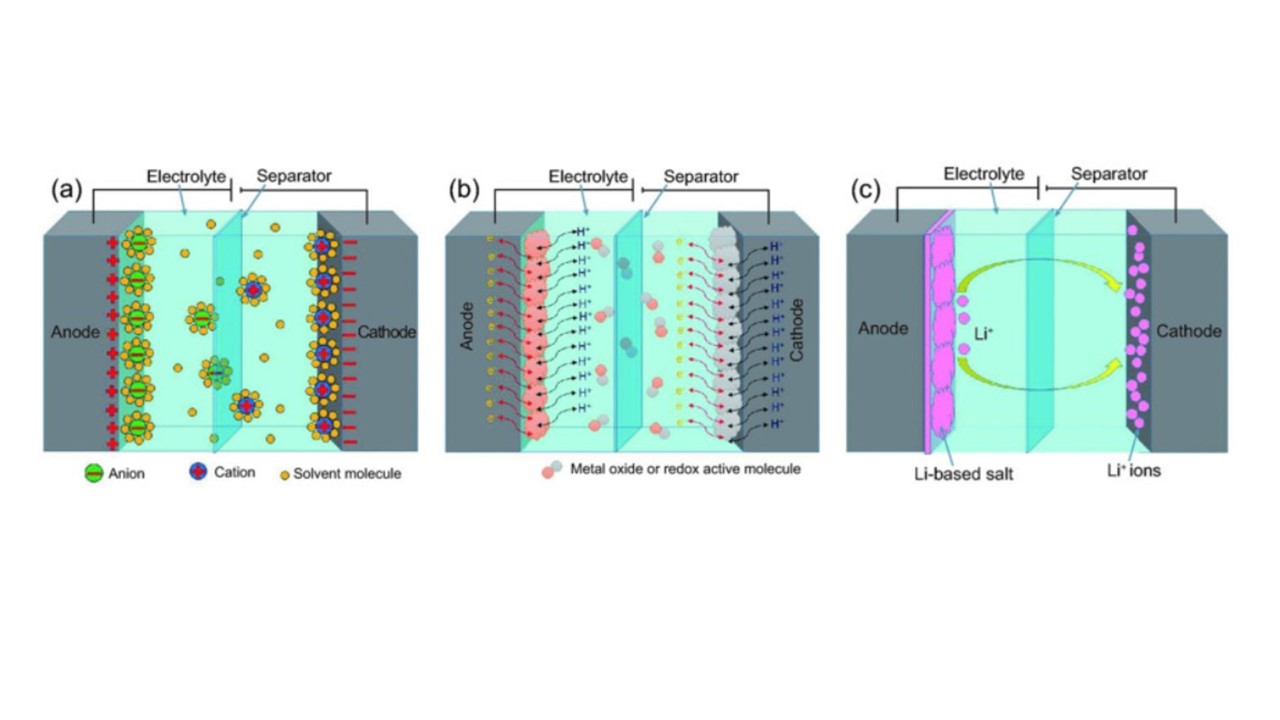
Figure 2: (a) Schematic of Electric Double Layer Capacitor
(b) Schematic of Pseudocapacitor (c) Schematic of Hybrid Supercapacitor
3. Design and Optimization of MXene Supercapacitor Electrodes
3.1. Two-Dimensional Sheet Structure
Similar to other two-dimensional materials, the assembly process of MXene is influenced by the van der Waals forces between molecules, leading to the stacking and overlapping of MXene sheets, which significantly reduces their effective active surface area. MXene was initially obtained by etching its precursor material using HF aqueous solution under various concentrations and conditions. However, relying solely on the etching process does not fully delaminate the stacked MXene sheets. Due to the strong van der Waals attraction between the MXene sheets during etching, these sheets tend to stack closely together, forming a loose multilayer structure that is difficult to completely separate.
3.2. Three-Dimensional Porous Structure
To overcome the stacking issue of two-dimensional materials and improve their surface utilization, researchers have made extensive efforts in surface modification and atomic doping to achieve high-performance MXene composites. However, traditional assembly methods, such as intercalation or spacing methods, have limited effectiveness in enhancing surface utilization. These methods cannot effectively support the MXene sheets, leading to continued stacking and, to some extent, weakening the overall performance of MXene. In recent years, based on previous work, researchers have proposed innovative 3D macroscopic assembly methods, such as sacrificial template methods and crosslinking techniques. These new methods, by selecting appropriate templates or crosslinking agents, significantly increase the spacing between MXene sheets and create three-dimensional interconnected porous structures between the sheets. Such a porous framework not only effectively increases the specific surface area but also provides numerous electrochemical active sites for interlayer electrons, promoting rapid electron transport. Furthermore, these structures can induce multiple reflections of electromagnetic waves within the material, significantly enhancing the material’s electromagnetic interference shielding performance.
3.3. Composite Structure
Zhao and other researchers used chemical etching to prepare mesoporous Ti₃C₂Tx (p-Ti₃C₂Tx) sheets. As shown in the figure 3, under Cu²⁺ catalysis, Ti₃C₂Tx partially oxidized in water under the influence of oxygen, generating TiO₂ nanoparticles on the surface. These were subsequently treated with HF etching to form a porous structure in the Ti₃C₂Tx sheets. Then, with the assistance of sodium dodecyl sulfate, multi-walled carbon nanotubes (CNTs) were dispersed in deionized water by ultrasonic treatment, and the CNT dispersion was mixed with the p-Ti₃C₂Tx colloidal solution. A composite film was prepared using vacuum-assisted filtration. This study focused on the performance of p-Ti₃C₂Tx/CNT electrodes, and the results indicated that, compared to non-porous Ti₃C₂Tx/CNT electrodes, the p-Ti₃C₂Tx/CNT electrodes demonstrated significantly superior lithium-ion storage performance. Particularly at a 0.1C discharge rate, they achieved a high capacity of 1250 mAh·g⁻¹, proving that the porous structure significantly enhances electron transport rates [4].
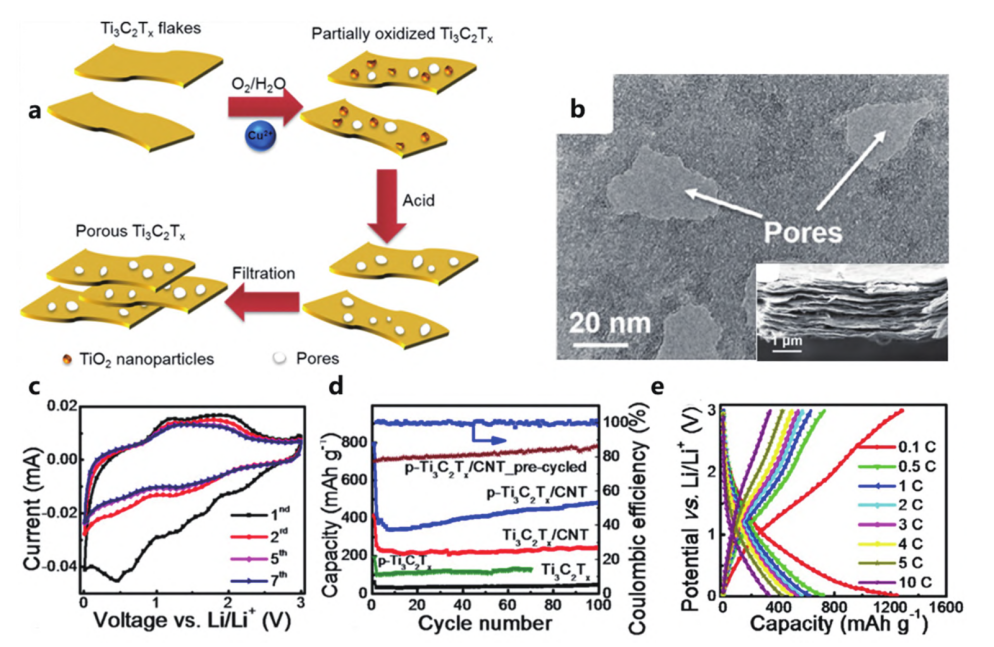
Figure 3: (a) Schematic of the mesoporous Ti₃C₂Tx MXene structure in terms of smoothness; (b) SEM images of the sheet-like porous structure after chemical etching and the cross-sectional SEM image of the porous structure; (c) Lithium-ion storage performance of 5mm thick mesoporous Ti₃C₂Tx; CV curve of mesoporous Ti₃C₂Tx electrode at 0.2 mV·s⁻¹; (d) Cycle stability performance of Ti₃C₂Tx, mesoporous Ti₃C₂Tx, Ti₃C₂Tx/CNT, and mesoporous Ti₃C₂Tx/CNT at 0.5C; (e) Voltage charge/discharge curves of the composite film at different cycling rates (1C = 0.32 A·g⁻¹).
Jia et al. proposed a novel method for preparing 3D MXene foams. First, approximately 1mm polypropylene (PP) resin spheres, water, dispersant, and subcritical CO₂ were mixed and added to a reaction vessel, where they were continuously stirred. During the stirring process, CO₂ was fully dissolved in the PP resin. After the set saturation time, the polypropylene foam microspheres were formed. Next, the foam microspheres were subjected to oxidation treatment using polyaniline (PANI), resulting in modified polypropylene (mPP) foam microspheres. The mPP foam microspheres were then immersed in a MXene solution via an impregnation method to obtain MXene@PANI/mPP composite foam microspheres. Finally, these composite foam microspheres were neatly arranged in a mold, coated with PDMS, and vacuum-dried at 60°C for 8 hours, successfully preparing 3D composite porous foams, as shown in Figure 4.
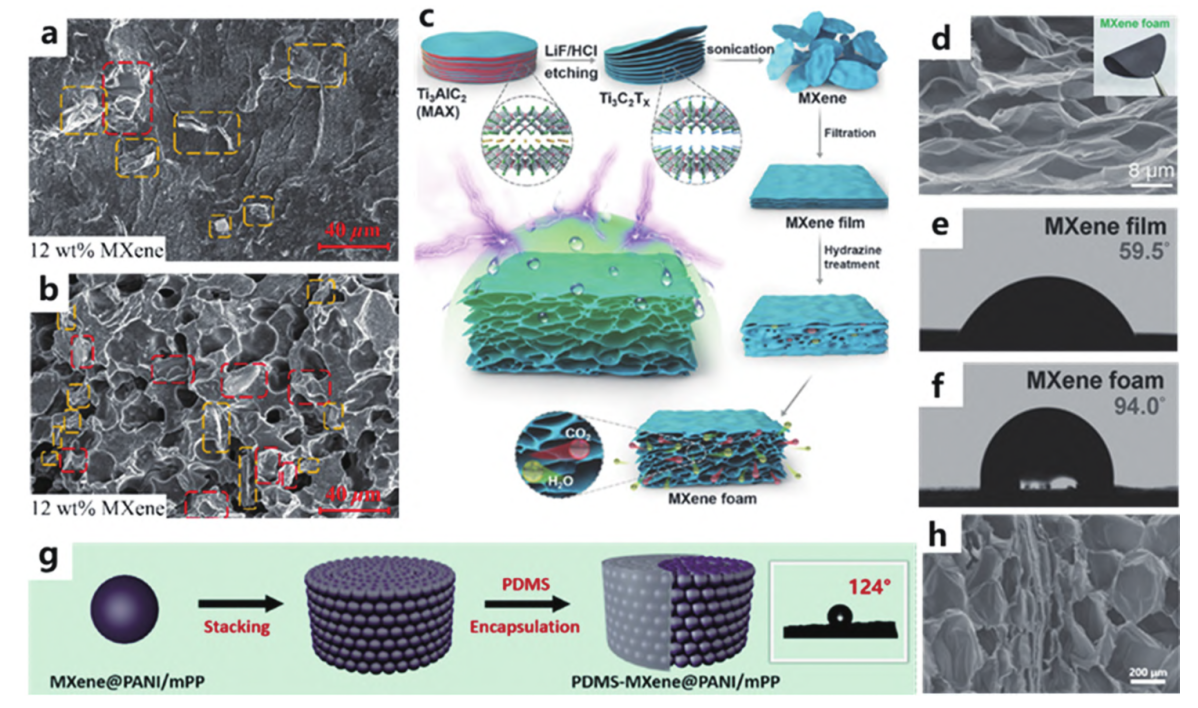
Figure 4: (a, b) SEM images of MXene films and MXene composite foams;
(c) Schematic of the preparation of hydrophobic, flexible MXene foams;
(d) Cross-sectional SEM image of MXene foams; (e, f) Water contact angle measurements;
(g) Schematic of the packaging process for MXene@PANI/mPP composite foams;
(h) SEM images of the porous structure of MXene@PANI/mPP composite foams.
3.4. Surface Chemical Modification
In 2011, Professor Gogotsi and his team first successfully etched the aluminum (Al) atomic layers in the Ti₃AlC₂ MAX phase using a 50% mass concentration of hydrofluoric acid (HF) and prepared two-dimensional multilayer Ti₃C₂Tx materials [10]. Through in-depth analysis of the experimental process, they found that HF reacts with the MAX phase, releasing hydrogen gas, and the resulting MXene material’s surface was modified with a large number of oxygen-containing functional groups [6]. Similarly, HF etching of other types of MAX phases also effectively produces corresponding MXene materials. During the HF etching of the MAX phase to prepare MXene, factors such as etching temperature, time, and the particle size of the MAX phase precursor influence the difficulty of etching and further determine the structure and properties of the final MXene material.
4. Applications of MXene Supercapacitors in Power Electronics
4.1. Motor Drive Systems
Motor drive systems require high charging and discharging performance from the power supply. During daily operation, electric vehicles undergo frequent start-ups, braking, and acceleration/deceleration actions. When starting or accelerating, the energy storage system on the DC side discharges, supplying energy to the motor via the inverter to operate the motor in electric mode. When the vehicle brakes or decelerates, the motor switches to generation mode, and electrical energy is fed back through the inverter to recharge the DC side energy storage system. To ensure efficient charging and discharging of the energy storage system, it is necessary to switch between different operating modes of the hybrid energy storage system in real time according to various operating conditions, thus achieving optimal power scheduling and dynamic distribution between the battery and supercapacitor. This ensures the energy efficiency, safety, and high performance of the electric vehicle’s energy storage system. Therefore, designing a reasonable power distribution strategy is critical for hybrid energy storage electric vehicles [7], as it ensures rapid switching between system modes, fast power response, and improves energy utilization efficiency. This has become one of the core issues in the research of hybrid energy storage electric vehicles. When the power demand of an electric vehicle exceeds the battery’s maximum discharge power and the state of charge of the supercapacitor is high, the power battery provides its maximum discharge power, and the remaining power demand is supplied by the supercapacitor. In this operating mode, D2 and VT1 are turned off, and the supercapacitor is boosted via VT2 to provide the required high power. This operating mode is illustrated in the figure 5.
MXene supercapacitors exhibit high power density and fast charging/discharging characteristics, making them highly promising for applications in electric vehicles. Supercapacitors have a high specific power, and when combined with batteries, they can effectively shorten the duration of the battery’s large-current discharge, enhance the starting and acceleration performance of electric vehicles, and also recover energy generated during braking. Due to the excellent charge/discharge performance of supercapacitors, they can be applied in electric vehicles to absorb high-energy negative pulses released by the battery during pulse charging.
In figure 6, the DC voltage source U1 represents the regulated DC output after filtering, and the secondary side of the capacitor is equivalent to this part. S1, S2, and LP form the current bi-quadrant converter. By controlling the power switches S1 and S2, and the current flow through their anti-parallel diodes, the charging and discharging of the battery pack is achieved. S3 is responsible for the main circuit’s switching control, while S4 controls the charging and discharging of the supercapacitor. During the charging phase, S4 and S2 remain off, and S3 is always on. The charging process is controlled via S1. During the discharging phase, S3 and S1 remain off, and S4 is always on. The discharging process is controlled via S2. Figure 6 shows the driving control timing sequence of each power switch [8].
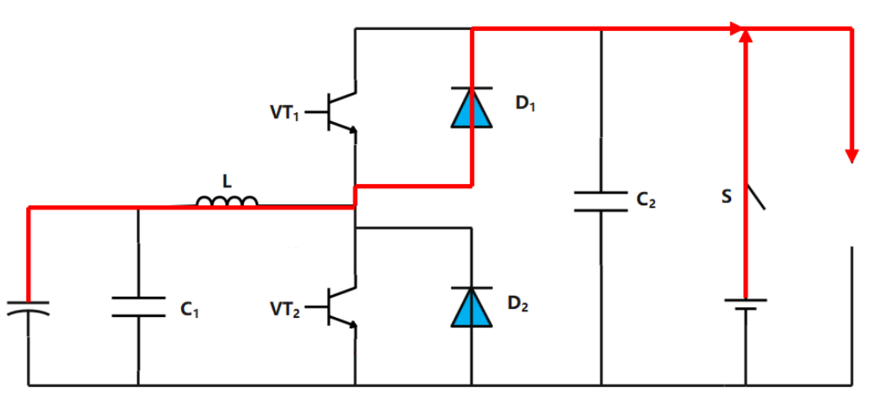
Figure 5: Schematic Diagram of Motor Drive

Figure 6: Switching Tube Driving Control Timing Diagram
4.2. Applications in Energy Storage Systems
Energy storage applications, such as grid peak shaving, require high power density and long cycle life. For instance, when the output power of photovoltaic (PV) generation does not match the power demand of the grid, an Energy Storage System (ESS) can compensate for this power difference, effectively reducing the impact of PV power fluctuations on grid stability. Currently, electrochemical energy storage technologies, represented by lithium-ion batteries, have become the mainstream choice for building ESS. However, lithium-ion batteries face limitations such as low power density and short cycle life, making them difficult to meet the high power and long lifespan requirements [11]. In contrast, supercapacitors possess higher power density and longer cycle life. Therefore, Supercapacitor Energy Storage Systems (SESS) show better adaptability in applications that require frequent charge and discharge, especially in situations with demands for dynamic regulation and rapid response, as shown in Figure 7.
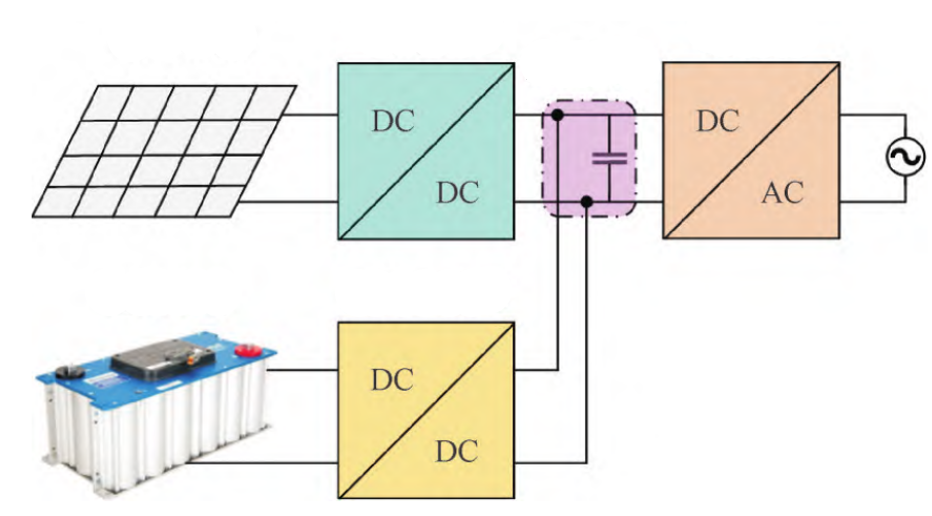
Figure 7: Schematic Diagram of Photovoltaic Power Generation - Supercapacitor Energy Storage Grid Integration
MXene supercapacitors can perform millions of rapid charge and discharge cycles without significant degradation. A supercapacitor is an electrochemical energy storage device that exhibits characteristics between traditional capacitors and batteries. It combines the fast charge and discharge capabilities, high power density, long cycle life, and good safety of capacitors, while also possessing energy storage properties similar to those of batteries. Compared to traditional physical capacitors and batteries, supercapacitors not only have long charge and discharge cycles but also do not require electrochemical reactions during the charging and discharging process. As a result, supercapacitors can achieve cycle lifespans of over ten thousand cycles, whereas conventional storage batteries typically last only a few hundred charge-discharge cycles.
Supercapacitors can work in coordination with other energy storage devices, such as batteries, on the grid side. In a traditional two-stage grid-connected system, the DC bus voltage is typically regulated by an inverter, and the power output from the inverter to the grid is limited by the actual generation capacity of the distributed power source. After the introduction of a Supercapacitor Energy Storage System (SESS), the inverter can operate in constant power control mode, leveraging the powerful power compensation functionality of the supercapacitors, thereby more precisely meeting the actual power demand on the grid side.
To enhance the grid’s peak shaving capability and power smoothing, the integration of distributed power sources may present challenges to power quality and grid stability. To address these issues, energy storage devices are often deployed in the distribution network to mitigate power fluctuations. The energy storage system effectively manages the distribution network and performs peak shaving and valley filling, thereby improving the safety and stability of the distribution grid. Additionally, the energy storage system can adjust its control strategy according to demand, flexibly switching between charge and discharge states and adjusting output power, optimizing the reliability and operational efficiency of the distribution network. By applying energy storage technology, energy waste can be reduced, and the economic benefits of the distribution network can be enhanced.
4.3. Applications in Other Fields
Researchers have effectively utilized the distinctive properties of MXenes, including their superior abilities in pressure and temperature sensing and energy storage. By combining MXenes with other materials, they have opened up new and innovative applications in fields such as medicine and human-machine interaction, demonstrating the broad potential and prospects of MXenes.
4.3.1. Photocatalysts
The growing need for efficient energy conversion devices has spurred research into electrocatalysis, particularly in processes like oxygen reduction (ORR), oxygen evolution (OER), and hydrogen evolution (HER). These technologies are applied in fuel cells, metal-air batteries, and electrochemical water splitting. To achieve high reaction rates, electrocatalysts made from noble metals such as platinum (Pt), platinum-iridium (PtIr), iridium dioxide (IrO₂), and ruthenium dioxide (RuO₂) are commonly employed. However, the high cost and scarcity of these metals limit their widespread use and commercialization [9]. MXene-based nanocomposites offer advantageous features, including a large surface area, hydrophilicity, excellent conductivity, thermal stability, tunable bandgap structures, and rich surface chemistry, which make them increasingly recognized as photocatalysts.
4.3.2. Electrocatalysts
The electrochemical process of water splitting serves as a solid foundation for producing clean and renewable hydrogen and oxygen. During the oxygen evolution reaction (OER), protons and oxygen are generated at the anode, while hydrogen is produced at the cathode in the hydrogen evolution reaction (HER). The OER process is highly influenced by pH levels, leading to distinct reaction mechanisms in acidic versus alkaline conditions. For enhanced electrocatalytic efficiency, conductive carbon materials are often paired with metal phosphide catalysts, which tend to have relatively poor conductivity. In recent research, mesoporous nickel-cobalt phosphide nanosheets (mNiCoP NS) and exfoliated Ti₃C₂ MXene have been combined to form a layered 2D intercalated structure aimed at improving water splitting performance. The excellent performance of Ti₃C₂@mNiCoP NS can be attributed to its remarkable characteristics, such as a high surface area, excellent stability (both structural and chemical), efficient conductivity, and a large number of accessible active sites. These properties make Ti₃C₂@mNiCoP NS superior to its individual components.
4.3.3. Novel Textiles
MXenes, known for their excellent electrical and thermal conductivity, have been integrated with polar polymer fibers to create multifunctional fabrics. In a 2018 study by Zhang et al., hydrophobic fabrics with enhanced conductivity were developed by depositing MXene flakes onto polyethylene terephthalate (PET) fabrics and modifying them through in situ polymerization with polypyrrole (PPy). Additionally, the fabric surfaces were treated with silicone resin coatings. These fabrics exhibited remarkable properties, including effective electromagnetic interference (EMI) shielding and strong Joule heating capabilities. Gao et al. also created a smart textile incorporating MXenes as a central material. This textile showcased exceptional characteristics, such as superhydrophobicity, breathability, and elasticity. MXene-based smart fabrics demonstrated impressive capabilities in strain sensing, temperature detection, photothermal and electrochemical reactivity, mechanical durability, and superhydrophobic permeability. The research underscores the potential of these textiles in the future of wearable electronic devices.
4.3.4. Medical Field
MXenes are groundbreaking nanoparticles known for their remarkable mechanical strength, high surface area relative to volume, and extremely thin structure. Their unique properties, such as biocompatibility and excellent electrical characteristics, have made them highly attractive for biosensor development. These materials hold great promise for a range of advanced biosensor technologies, including electrochemical sensors, biocompatible field-effect transistors, and optical/fluorescent biosensors. Additionally, the performance of MXenes can be further improved through the integration of nanomaterials or surface modifications.
4.3.5. Pressure Sensors
Both multilayer and single-layer MXenes with accordion-like structures have been applied in flexible piezoresistive sensors. In these devices, pressure is converted into a resistance signal due to the deformation of the MXene material. Multilayer MXene-based piezoresistive sensors are created by etching MAX-phase materials to remove the A layers, resulting in accordion-like MXene blocks, each composed of several single-layer MXenes. In 2017, Ma et al. developed a flexible piezoelectric sensor by applying ethanol-dispersed multilayer Ti₃C₂Tₓ droplets onto a polyimide (PI) electrode. The interlayer distance of MXenes changes significantly under pressure, which was leveraged in their design for practical use. The sensor exhibited gauge factors (GF) ranging from 0.19–0.82 and 0.82–2.13%, with corresponding values of 180.1–94.8 and 94.8–45.9. This sensor was also used to monitor various human activities, such as eye blinking, cheek puffing, and throat swallowing. Due to the inherent brittleness of MXenes and their inability to withstand high pressures, they must be combined with mechanically strong materials to provide support under repeated stress and strain. Currently, two types of MXene-based flexible piezoresistive sensors are in use: aerogel sensors and MXene/elastic matrix sensors [12].
5. Conclusion
As an emerging two-dimensional material, MXene has shown broad application prospects in the power electronics field due to its excellent conductivity, thermal stability, and structural tunability. By analyzing its specific applications in energy storage, thermal conductivity, and flexible electronics, it is clear that MXene materials not only significantly enhance the efficiency of power electronic devices but also enable miniaturization, lightweight design, and high integration [13]. Although there are still technical challenges regarding its fabrication and stability, research progress indicates that through structural optimization and surface modification, the comprehensive performance of MXene materials is continuously improving.
(1) In the future, research and applications of MXene in the field of power electronics will be further advanced. More economical and environmentally friendly synthesis methods will be developed to reduce material costs. Additionally, practical applications of MXene in high-power and high-frequency power electronic devices will be strengthened to improve its stability and performance under real-world operating conditions.
(2) With the integration of machine learning and materials science, data-driven approaches can be used in the future to optimize the material properties of MXenes. Researchers can utilize machine learning algorithms to model the relationship between the structure, composition, and performance of MXenes based on extensive experimental data, aiming to predict and design MXene composites with superior performance.
(3) Future research should focus on developing high-yield, low-cost processes suitable for large-scale production. For instance, automated production equipment could be introduced to optimize process parameters and improve the continuity and stability of production lines. Moreover, exploring new raw material sources or more efficient extraction and synthesis techniques could effectively reduce unit costs and increase production efficiency. Meanwhile, ensuring the consistency and performance stability of each batch of MXenes is essential to meet the stringent requirements of industrial applications.
References
[1]. Xiao, M., Su, Y., & Du, B. (2019). Research progress on supercapacitors. Electronic Components and Materials, 38(9), 1–12. https://doi.org/10.14106/j.cnki.1001-2028.2019.09.001
[2]. Miao, W., Zhang, X., Wang, K., et al. (2017). Research progress on novel MXene materials in supercapacitors. Power Supply Technology, 41(4), 665–667.
[3]. Anasori, B., Lukatskaya, M. R., & Gogotsi, Y. (2017). 2D metal carbides and nitrides (MXenes) for energy storage. Nature Reviews Materials, 2, 16098.
[4]. Lü, K., Zhang, J., Kong, N., et al. (2022). Progress in the construction and application of three-dimensional MXene porous structures. Chemical Bulletin, 85(5), 514–538+559. https://doi.org/10.14159/j.cnki.0441-3776.2022.05.012
[5]. Li, M., & Li, J. (2019). Principles and applications of supercapacitors. Science and Technology Wind, 13, 177+191. https://doi.org/10.19392/j.cnki.1671-7341.201913150
[6]. Xu, S. (2019). Preparation and electrochemical behavior study of two-dimensional layered transition metal carbide-based composites (Master’s thesis, Jilin University).
[7]. Yuan, J., & Chen, Q. (2018). Study on fast charging of electric vehicles based on supercapacitors. Journal of Electric Power, 33(6), 478–484. https://doi.org/10.13357/j.cnki.jep.002757
[8]. Dhamodharan, S., Duraisami, R., et al. (2024). MXenes: A promising material with multifunctional applications. Journal of Environmental Chemical Engineering, 112316.
[9]. Anasori, B., Lukatskaya, M. R., & Gogotsi, Y. (2017). 2D metal carbides and nitrides (MXenes) for energy storage. Nature Reviews Materials, 2, 16098.
[10]. Shao, Y., Zhang, H., & Gao, Y. (2025). Dual-criteria multi-mode power distribution strategy for hybrid energy storage systems in electric vehicles. Modern Power, 1-7. https://doi.org/10.19725/j.cnki.1007-2322.2023.0007
[11]. Zhou, K., Wen, X., Deng, T., et al. (2024). DC bus voltage stability control of photovoltaic generation-supercapacitor energy storage grid-connected systems. Power Grid and Clean Energy, 40(2), 47–55+62.
[12]. Xin, M., et al. (2020). MXenes and their applications in wearable sensors. Frontiers in Chemistry, 8, 297.
[13]. Khazaei, M., et al. (2019). Recent advances in MXenes: From fundamentals to applications. Current Opinion in Solid State and Materials Science, 23(3), 164–178.
Cite this article
Hu,Z. (2025). Principle of MXene Supercapacitors and Their Applications in Power Electronics. Applied and Computational Engineering,140,74-84.
Data availability
The datasets used and/or analyzed during the current study will be available from the authors upon reasonable request.
Disclaimer/Publisher's Note
The statements, opinions and data contained in all publications are solely those of the individual author(s) and contributor(s) and not of EWA Publishing and/or the editor(s). EWA Publishing and/or the editor(s) disclaim responsibility for any injury to people or property resulting from any ideas, methods, instructions or products referred to in the content.
About volume
Volume title: Proceedings of the 3rd International Conference on Mechatronics and Smart Systems
© 2024 by the author(s). Licensee EWA Publishing, Oxford, UK. This article is an open access article distributed under the terms and
conditions of the Creative Commons Attribution (CC BY) license. Authors who
publish this series agree to the following terms:
1. Authors retain copyright and grant the series right of first publication with the work simultaneously licensed under a Creative Commons
Attribution License that allows others to share the work with an acknowledgment of the work's authorship and initial publication in this
series.
2. Authors are able to enter into separate, additional contractual arrangements for the non-exclusive distribution of the series's published
version of the work (e.g., post it to an institutional repository or publish it in a book), with an acknowledgment of its initial
publication in this series.
3. Authors are permitted and encouraged to post their work online (e.g., in institutional repositories or on their website) prior to and
during the submission process, as it can lead to productive exchanges, as well as earlier and greater citation of published work (See
Open access policy for details).
References
[1]. Xiao, M., Su, Y., & Du, B. (2019). Research progress on supercapacitors. Electronic Components and Materials, 38(9), 1–12. https://doi.org/10.14106/j.cnki.1001-2028.2019.09.001
[2]. Miao, W., Zhang, X., Wang, K., et al. (2017). Research progress on novel MXene materials in supercapacitors. Power Supply Technology, 41(4), 665–667.
[3]. Anasori, B., Lukatskaya, M. R., & Gogotsi, Y. (2017). 2D metal carbides and nitrides (MXenes) for energy storage. Nature Reviews Materials, 2, 16098.
[4]. Lü, K., Zhang, J., Kong, N., et al. (2022). Progress in the construction and application of three-dimensional MXene porous structures. Chemical Bulletin, 85(5), 514–538+559. https://doi.org/10.14159/j.cnki.0441-3776.2022.05.012
[5]. Li, M., & Li, J. (2019). Principles and applications of supercapacitors. Science and Technology Wind, 13, 177+191. https://doi.org/10.19392/j.cnki.1671-7341.201913150
[6]. Xu, S. (2019). Preparation and electrochemical behavior study of two-dimensional layered transition metal carbide-based composites (Master’s thesis, Jilin University).
[7]. Yuan, J., & Chen, Q. (2018). Study on fast charging of electric vehicles based on supercapacitors. Journal of Electric Power, 33(6), 478–484. https://doi.org/10.13357/j.cnki.jep.002757
[8]. Dhamodharan, S., Duraisami, R., et al. (2024). MXenes: A promising material with multifunctional applications. Journal of Environmental Chemical Engineering, 112316.
[9]. Anasori, B., Lukatskaya, M. R., & Gogotsi, Y. (2017). 2D metal carbides and nitrides (MXenes) for energy storage. Nature Reviews Materials, 2, 16098.
[10]. Shao, Y., Zhang, H., & Gao, Y. (2025). Dual-criteria multi-mode power distribution strategy for hybrid energy storage systems in electric vehicles. Modern Power, 1-7. https://doi.org/10.19725/j.cnki.1007-2322.2023.0007
[11]. Zhou, K., Wen, X., Deng, T., et al. (2024). DC bus voltage stability control of photovoltaic generation-supercapacitor energy storage grid-connected systems. Power Grid and Clean Energy, 40(2), 47–55+62.
[12]. Xin, M., et al. (2020). MXenes and their applications in wearable sensors. Frontiers in Chemistry, 8, 297.
[13]. Khazaei, M., et al. (2019). Recent advances in MXenes: From fundamentals to applications. Current Opinion in Solid State and Materials Science, 23(3), 164–178.





